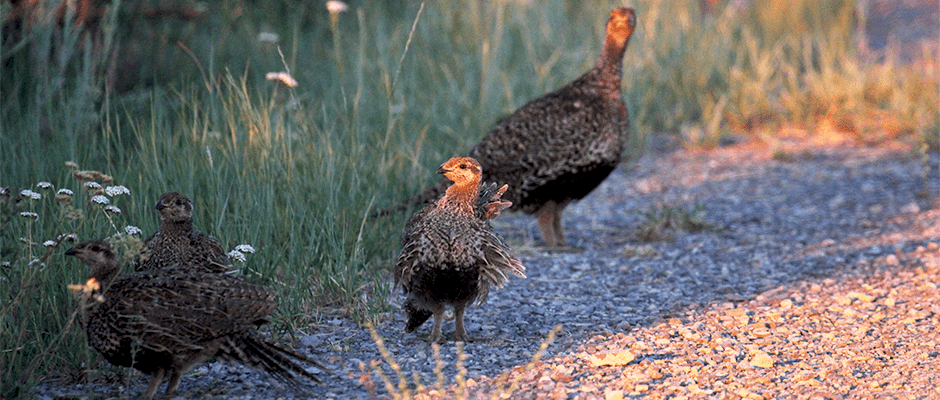Share this article
WSB study: Utah sage-grouse benefits from conifer removal
Across the greater sage-grouse’s range, conifers annually invade 60,000 acres of the bird’s sagebrush (Artemisia spp.) habitat. New research from northwestern Utah indicates that removing these trees boosts the success of the sage-grouse’s nests and broods.
“They have improved productivity — greater nest and brood survival — in areas where we’ve done conifer treatments,” said Terry Messmer, co-author on the paper published in the March issue of the Wildlife Society Bulletin. “They immediately use these areas, predicated on where we put the treatment and the size of treatment.”
In the mid-1990s, local landowners became concerned about declining sage-grouse (Centrocercus urophasianus) populations and convened working groups throughout Utah to determine conservation threats and strategies to increase their populations. One of the main pressures they identified in the West Box Elder Sage-grouse Management Area, where Messmer’s team conducted this study, was encroachment by pinyon (Pinus spp.) and juniper (Juniperus spp.) into sagebrush habitat due to little fire or vegetation management.
In 2012, researchers began to look at how removing the trees using mechanical treatments — such as grinding them down to a mulch of wood shavings — would preserve the sagebrush understory and benefit sage-grouse by increasing the habitat available to them. They counted fecal pellets and tracked radio-collared sage-grouse to determine bird use of the treated areas and where conifers should be removed to optimally increase the birds’ habitat use.
“Sage-grouse use of these treatments was positively associated with mesic or wet environments such as irrigated pastures and alfalfa (Medicago sativa) hay fields located within half a mile,” said Messmer, a longtime TWS member. To increase sage-grouse use of conifer removal treatments, Messmer said, managers should “situate treatments in open spaces that provide food and cover for sage-grouse. Do large-scale treatments that are hundreds of acres, where you can have an effect on its landscape movements.”
This study was the first to recognize the importance of removing conifers near mesic habitats, Messmer said. Those habitats contain insects and plants that are vital food sources for sage-grouse chicks.
Messmer and his colleagues are continuing their research with location data from GPS transmitters fixed to the birds’ rumps. These devices provide more information than radio collars and at a finer scale throughout the day. This helps the biologists better track sage-grouse’s response to ongoing management projects and guide future conifer removal initiatives to create corridors facilitating the birds’ seasonal movements and breeding.
Utah managers have already removed encroaching conifers from over 300,000 acres of impacted sage-grouse habitat, clearing more space for sage-grouse than have all other western states combined, Messmer said.
“We’re hoping we soon report that these large landscape efforts are also having a positive effect on the overall population trends where we’re doing these treatments,” he said.
Header Image: A female sage-grouse watches over her brood in the West Box Elder Sage-grouse Management Area in northwestern Utah. ©Todd Black








